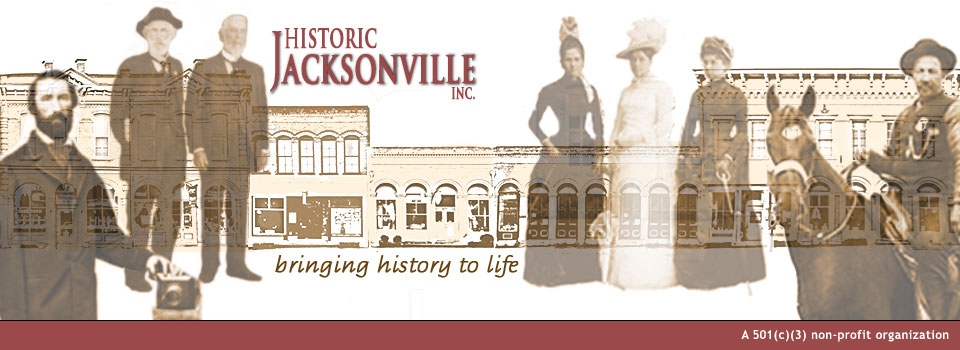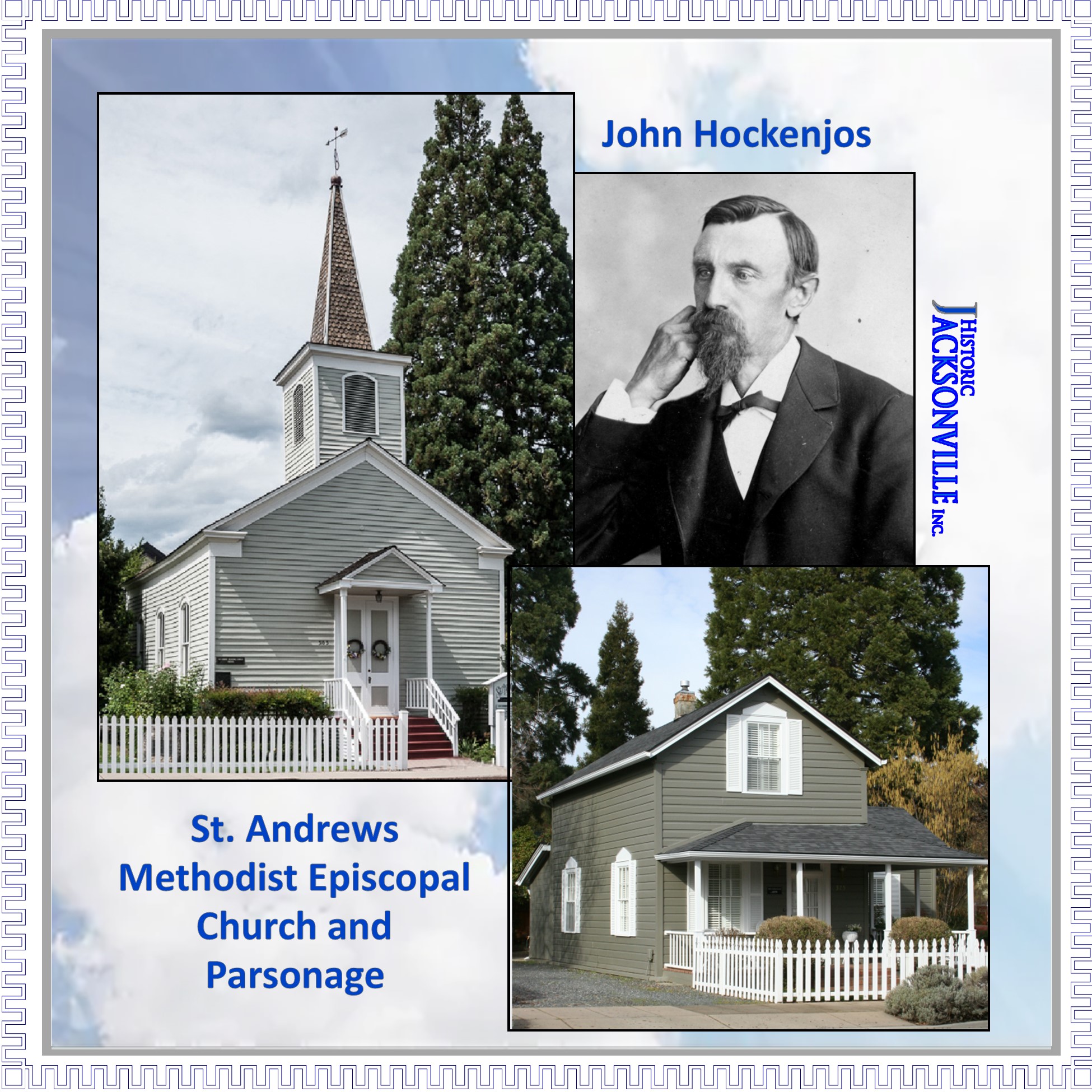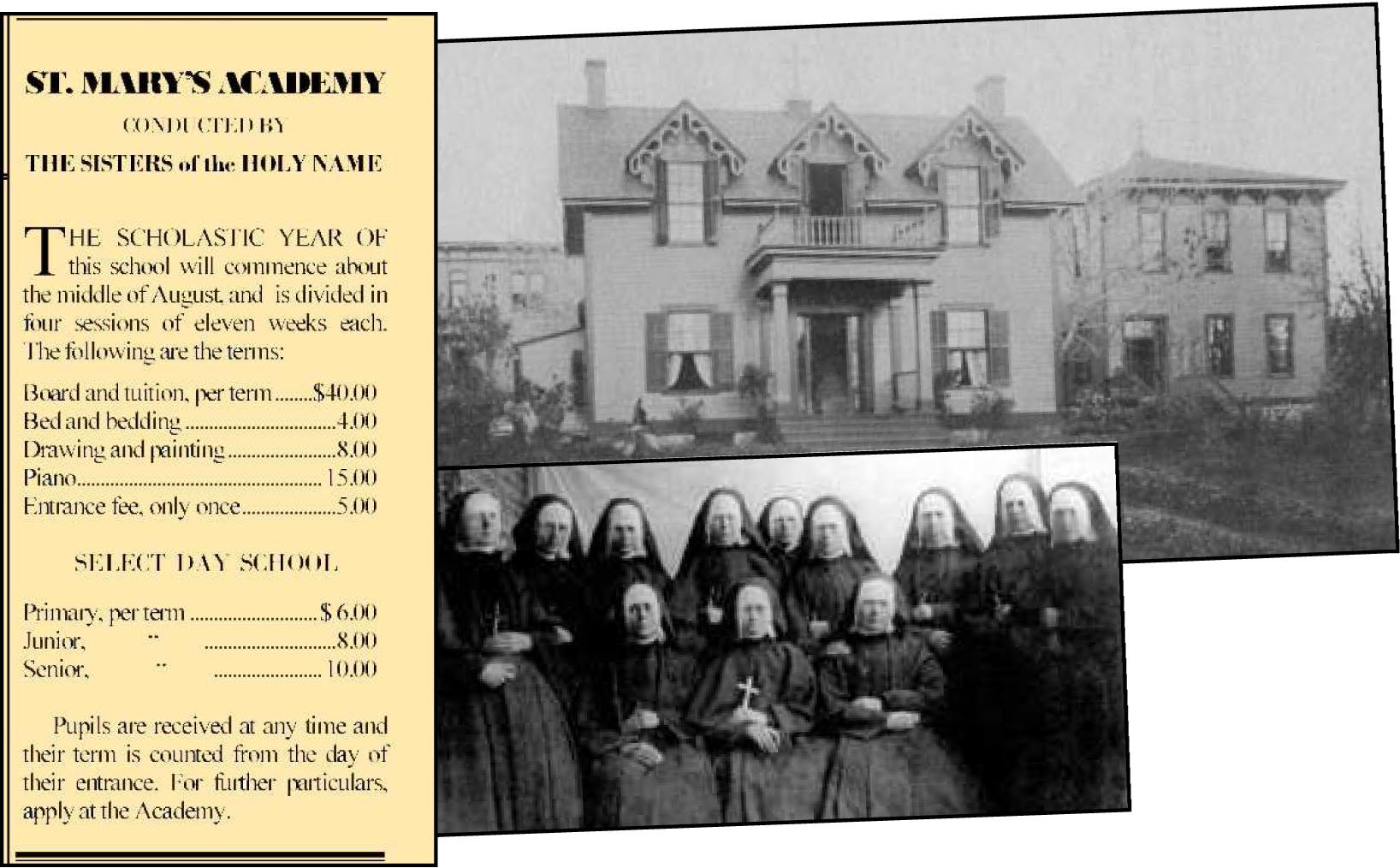Catholic Academy School #1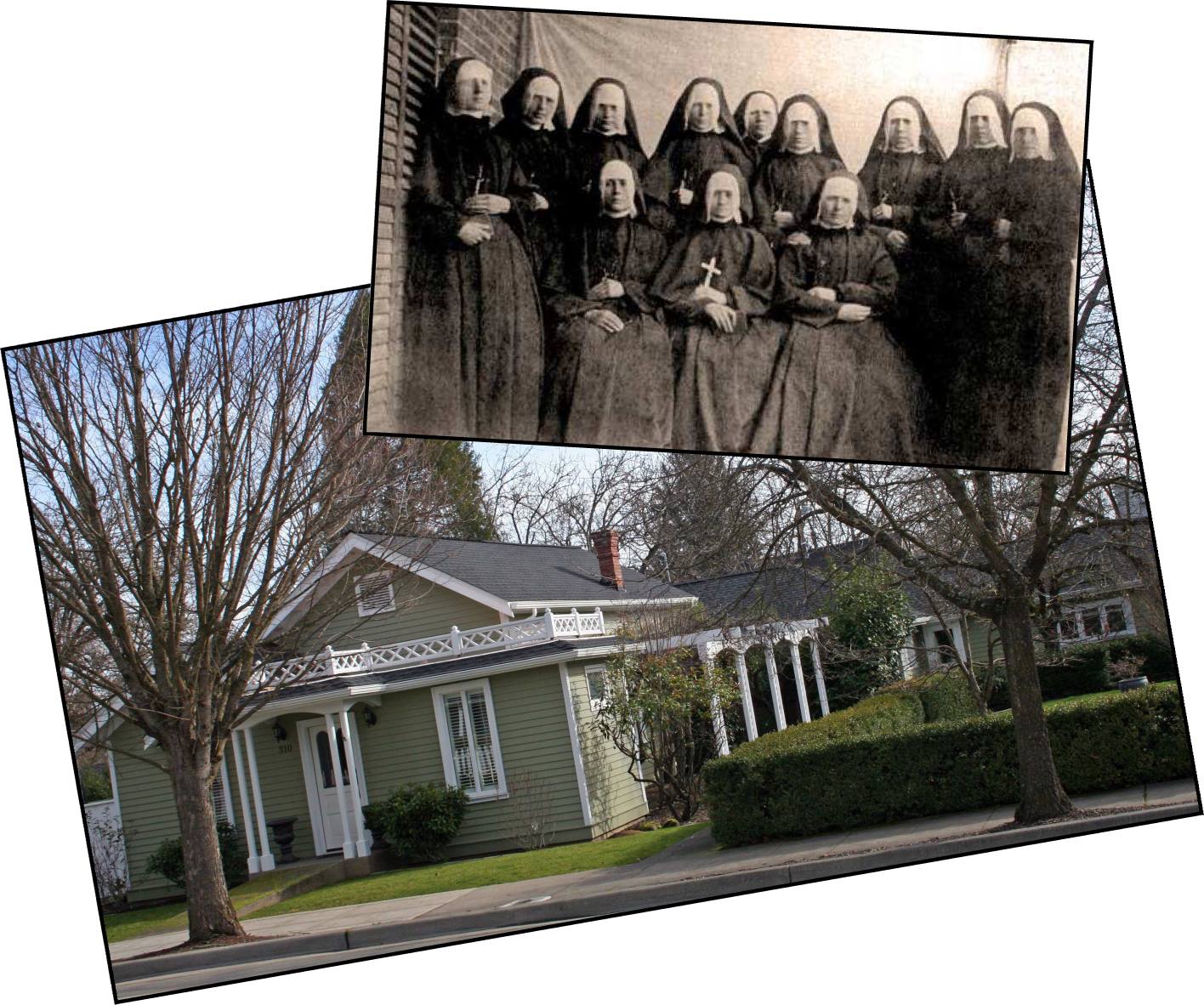
Before the Sisters of the Holy Name opened St. Mary’s Academy in 1865 in what is now Beekman Square, they briefly operated St. Joseph’s School for Boys in this building at 310 North 5th Street. They obtained the deed in 1864, the same year they had been brought to Jacksonville by Rev. Francis Xavier Blanchet, who for many years served as the parish priest of St. Joseph’s Catholic Church. The school was short lived, before being replaced by St. Mary’s. This structure, known as “the Catholic Academy School,” may have subsequently housed St. Mary’s students or the Catholic Sisters, since the Sisters retained ownership until 1873.
Catholic Academy School #2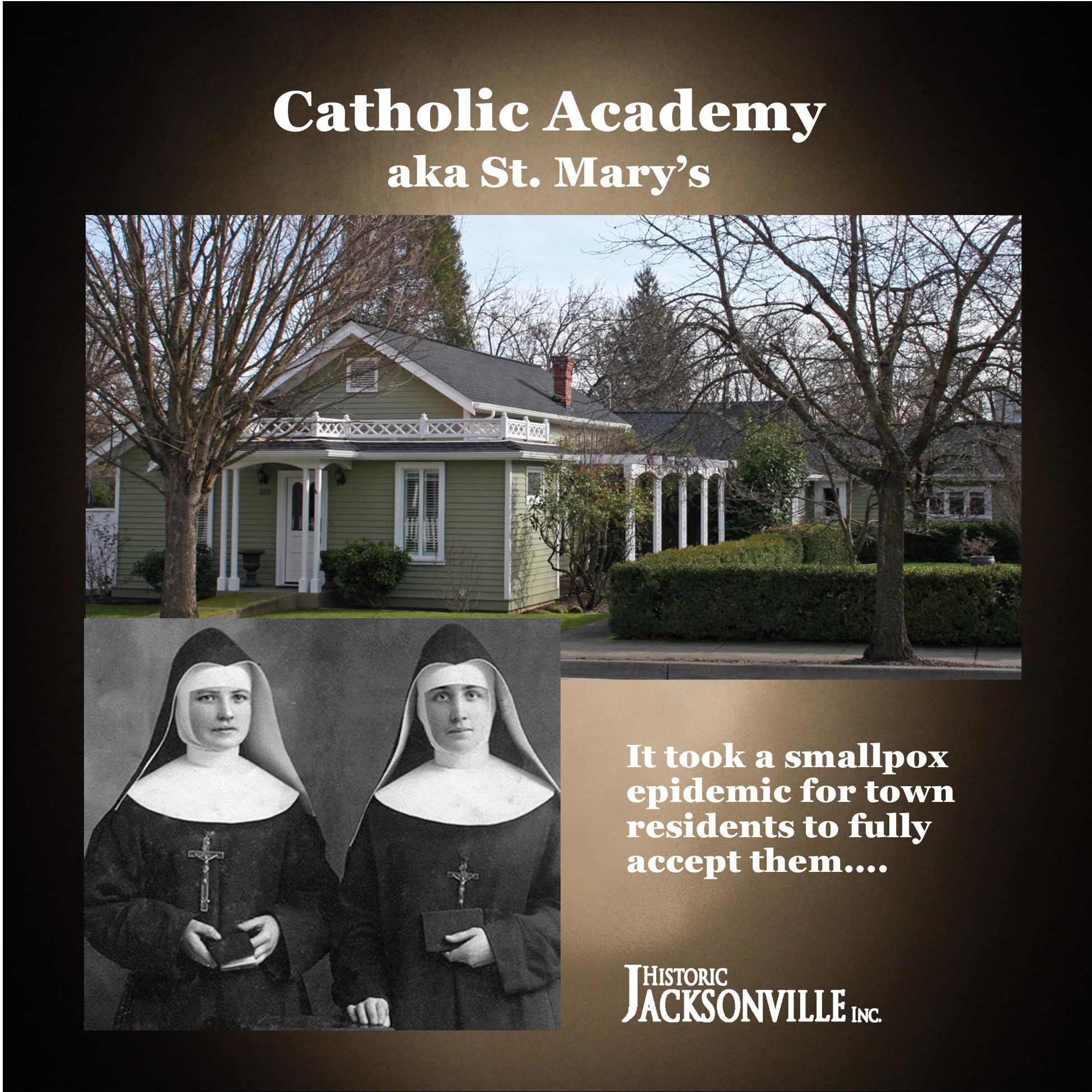
St. Mary’s School holds a prominent role in Southern Oregon today, but it traces its beginning to 1865 Jacksonville when Rev. Francis Xavier Blanchet, priest of St. Joseph’s Catholic Church, asked the Sisters of the Holy Names of Jesus and Mary to open a school in town. Blanchet collected money and used it to purchase the block bounded by North 5th and 6th and East D and E streets. He spent $642.50 for the property with its two buildings and $1,400 for a piano, leaving less than $100 for furniture.
When Sister Mary of the Seven Dolores, Sister Mary Febronia, and Sister Mary Zotique arrived from their convent in Montreal, they found their new home had a piano, six chairs, and a table. They spent their first night on the floor on mattresses loaned by neighbors.
The Sisters opened St. Mary’s Academy in the original portion of what is still known as the Catholic Academy building at the corner of 5th and D. They divided the 16-foot by 58-foot one-story structure into five rooms which were used as chapel, parlor, community room, refectory, and classrooms. The house on the adjoining lot became a dormitory for boarders. The school opened on September 11, 1865, with one boarding student; by the end of the school year there were 12 boarders and 33 day students.
The Sisters gained community support when a smallpox epidemic struck in August 1868. For two months, two of the Sisters visited the homes of the “plague-stricken” day and night, tending to their needs. When the number of cases subsided in April, convalescing patients were taken to the local hospital. The exhausted nuns found consolation in having baptized a number of patients. They also earned the respect of local residents.
Catholic Rectory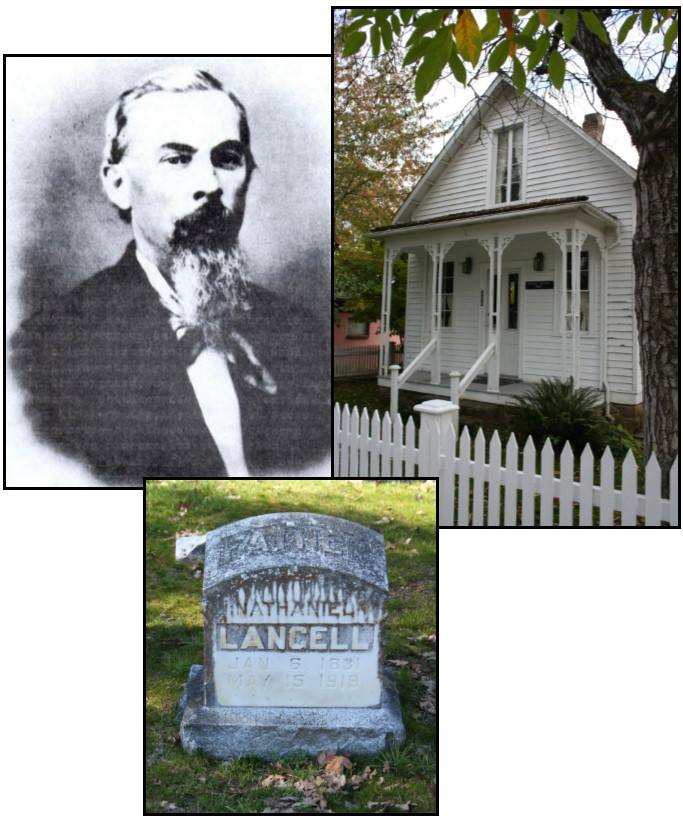
Although the structure at 210 North 4th Street in Jacksonville is known as the Catholic Rectory, it was not purchased for that purpose until 1875. The house had been built around 1868, probably for Nathaniel Langell whose brother had acquired the property in 1859. For many years Langell ran a boot and shoe store and repair shop at various locations on California Street. He served as President (Mayor) of the Jacksonville Board of Trustees; he was elected in 1872 and again in 1896 as a Jackson County representative to the State Legislature; and for a period he was Master of the local Masonic lodge. Later in life he was appointed U.S. Forester of the Cascade Rogue Forest Reserve, i.e. Forest Supervisor of the Rogue River National Forest.
Presbyterian Church #1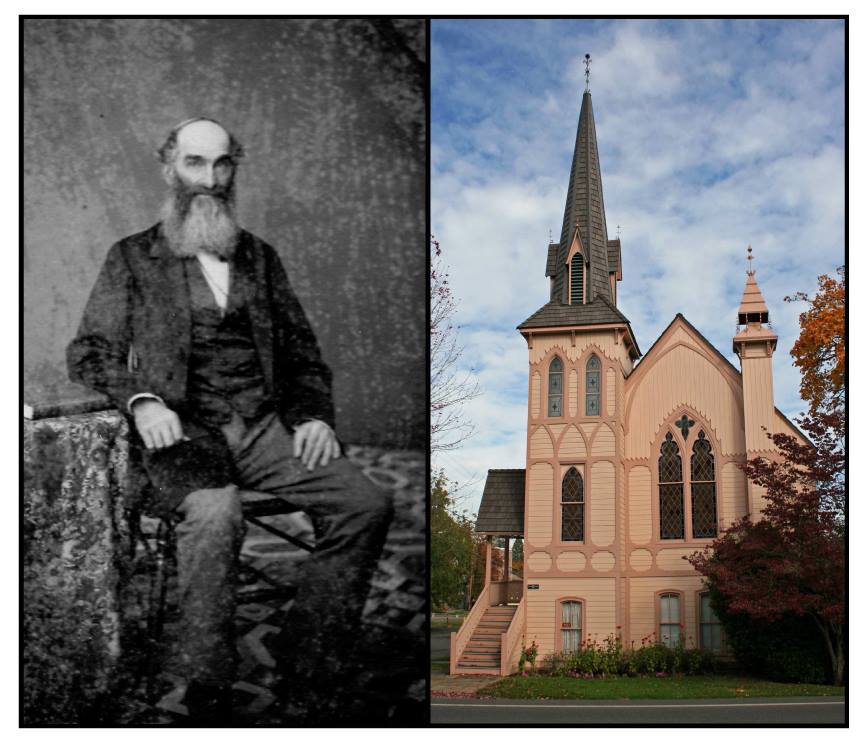
Although Jacksonville’s historic Presbyterian Church building at the corner of 6th and California streets was not completed until 1881, the local presbytery had been formally organized in 1857by Reverend Moses Williams, the first Presbyterian missionary in Southern Oregon. In the interim, Williams conducted services every third Sunday of the month in various locations throughout the Rogue Valley, including Jacksonville’s Methodist Episcopal Church, schoolhouses and private homes. Williams also served as County Superintendent of Schools and is the one who configured present day Jackson County school districts.
Presbyterian Church #2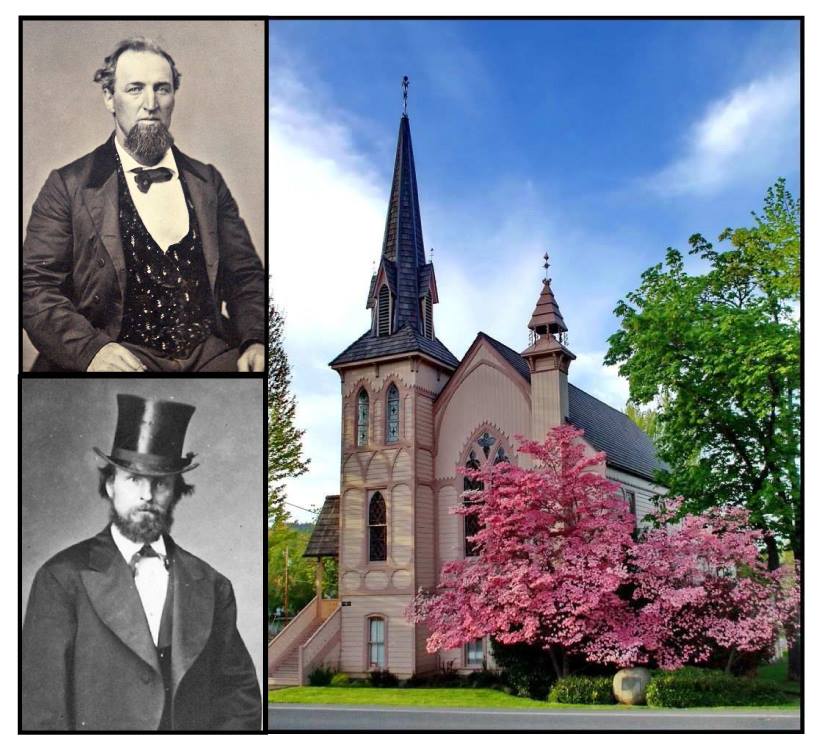
The historic Presbyterian Church, located at the corner of 6th and California streets, is one of Jacksonville’s most striking examples of Victorian Gothic architecture. After 24 years of the local Presbyterian congregation meeting in various locations throughout the Rogue Valley, plans for their own “religious edifice” got underway in 1878 when William Hoffman and C.C. Beekman purchased the land. The design of the building may have been inspired by one of the architectural pattern books popular at the time or supplied by the Presbyterian Board of Church Erection. Brick mason, George Holt, laid the foundation; carpenter David Linn constructed the wood frame, roof and belfry. Beekman made a special trip to San Francisco to purchase a 1,000-pound bell for the belfry. While the estimated cost for the structure was $4,500, the actual cost was more than $6,000, half of which was contributed by Beekman. The church was dedicated on December 4, 1881. After its completion, it was eulogized in journals and newspapers as “a model of architectural beauty” and “the most ornate and handsome [church] in Southern Oregon.”
St. Andrews Methodist Episcopal Church, “Jacksonville’s First Church”
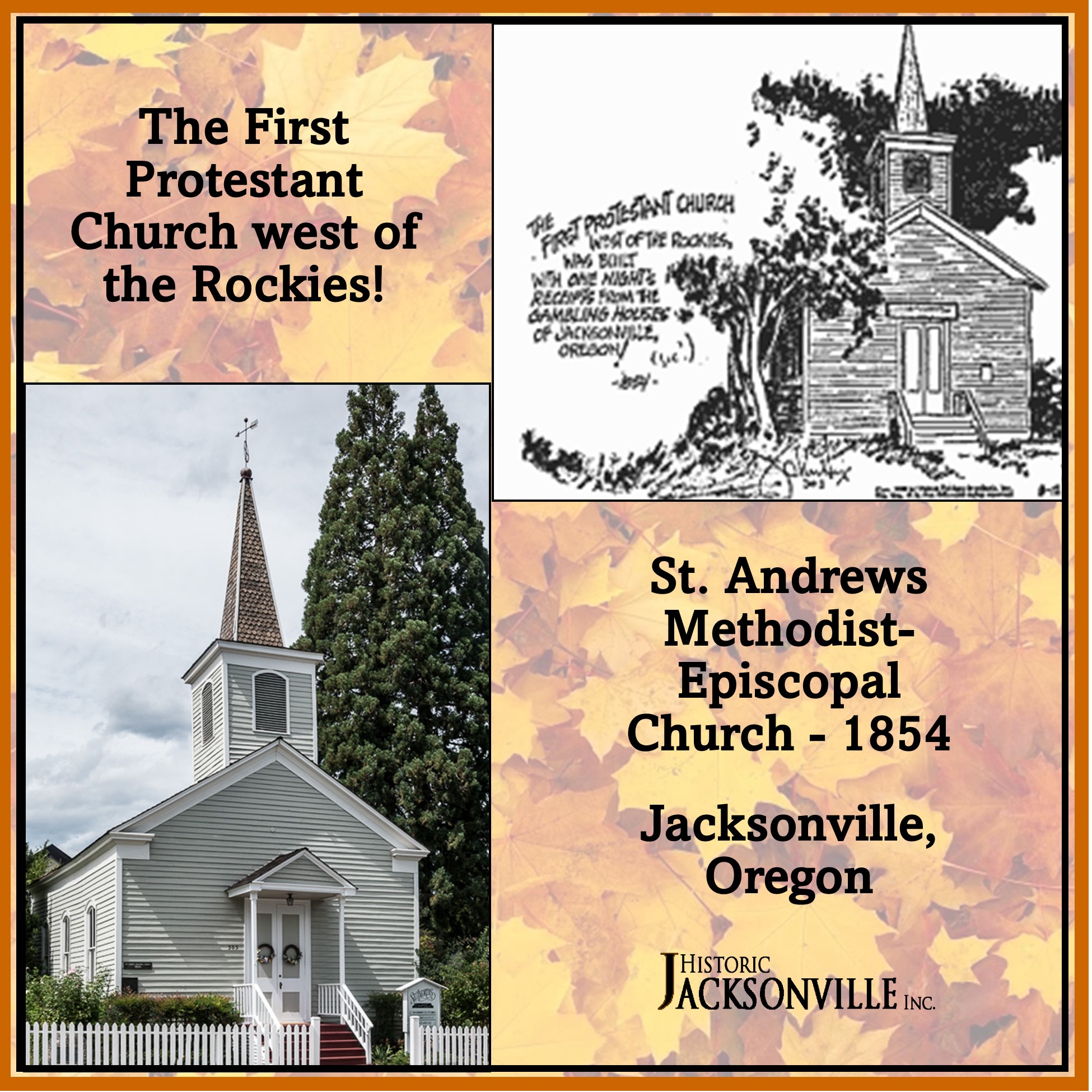
At least Jacksonville’s First Church is not open to debate. St. Andrews Methodist Episcopal Church, now located at the corner of North 5th and D streets, was completed in 1854—the first church built in Jacksonville, the first church built in southwestern Oregon, and the oldest wood frame structure in town. It was erected in 1854 and dedicated New Year’s Day 1855. It is also one of a handful of churches claiming the title of “Oldest Protestant Church West of the Rockies.”
Two pastors can be credited with its construction—Joseph Smith and Thomas Fletcher Royal. Both had arrived in Jacksonville in October 1853 as part of a “Preacher Wagon Train.” Smith is credited with beginning the church’s construction; Royal with completing it in 1854 as its pastor and guiding force. Royal’s wife, Mary Ann, was one of the women who visited various gold camps asking for donations toward its construction.
Royal went a step farther. In his memoirs, he recorded walking into a Jacksonville saloon and asking gamblers for help in building the church. When they questioned his willingness to use gambling money to build a house of worship, Royal reported replying, “Oh, yes. And we would put it to a better use.”
The building originally faced 4th Street but was rotated 180 degrees to its present location when the new Jackson County courthouse was completed in 1884.
St. Andrews Methodist Episcopal Church Rose Garden
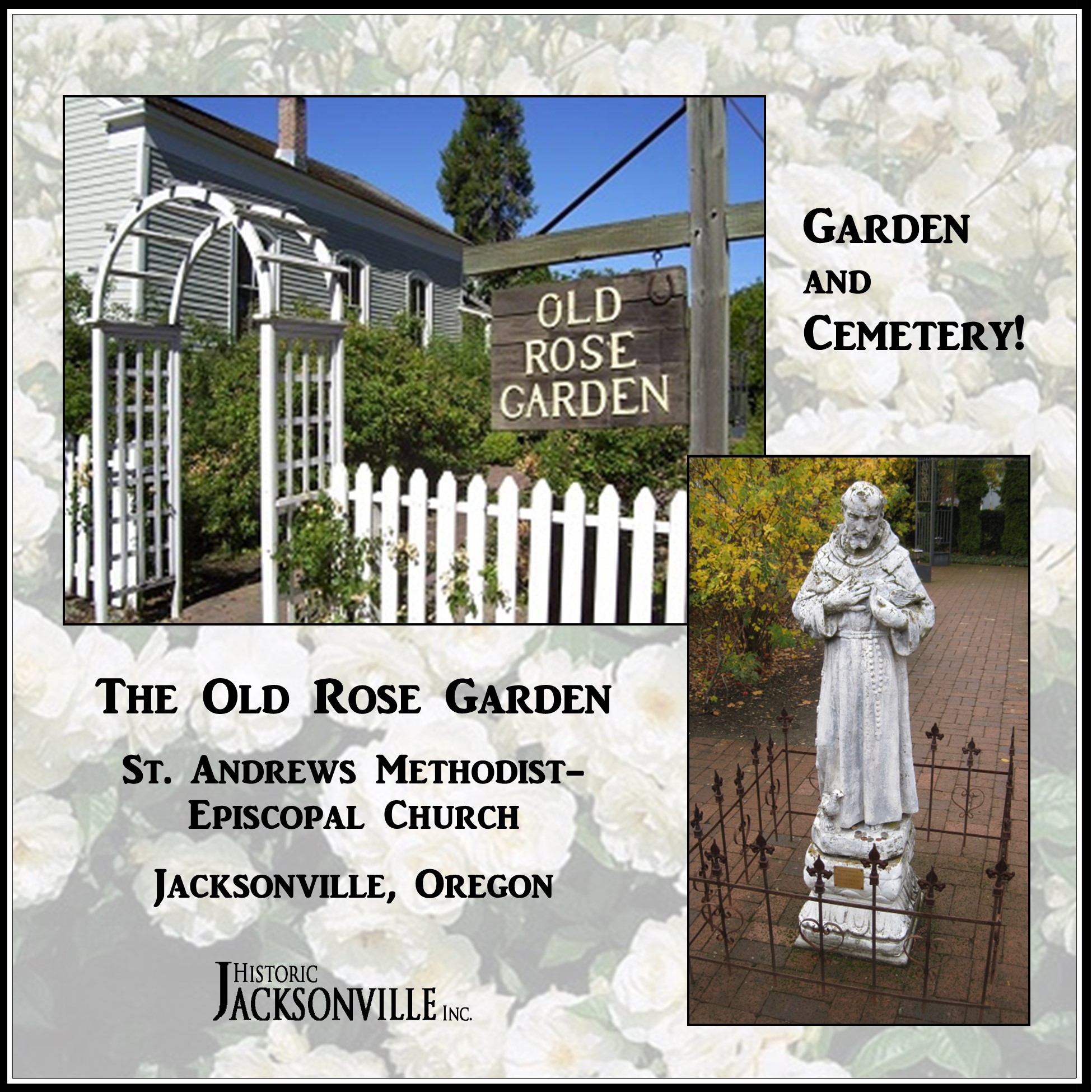
Did you know that the Old Rose Garden next to Jacksonville’s 1854 St. Andrews Methodist Episcopal Church on North 5th Street is not only a garden but also a cemetery?
In March of 1960, the Medford Rose Society and the City of Jacksonville entered into an agreement to set aside the lot immediately north of the church for an Old Rose Garden. Planted by the Medford Rose Society, the garden only contained varieties of roses that originated before 1867. Many of the species were rare old roses, no longer on the market and priceless to rose fanciers. It was visited by rosarians from through the northwest and Canada.
However, the garden, like the church itself, fell into disrepair. In 1978, Bruce Butte, a well-known local artist, organized a committee to repair the old church building for use as a traditional Episcopal (now Anglican) Church. At the same time Don Neilson took on the garden restoration. For the greater part of the next two decades, the Garden was under Neilson’s care. The statue of St. Francis of Assisi was dedicated in September 1988.
In 1981, Rev. Paul Habliston, a retired Episcopal priest from Colorado had become the Rector of St. Andrews. When Father Paul died in 1991, the City of Jacksonville gave permission for his cremated remains to be buried in the Rose Garden. His wife’s remains later joined him.
Today, the Old Rose Garden is not only a place where the Hablistons found peace, it’s also a place where Jacksonville residents and visitors can walk, sit, and meditate.
St. Andrews Methodist Episcopal Parsonage
St. Andrews Methodist Episcopal Church, now located at the corner of North 5th and D streets, was completed in 1854—the first church built in Jacksonville, the first church built in southwestern Oregon, and the oldest wood frame structure in town. At some point a parsonage was also constructed on California Street, just east of what became the site of the historic Presbyterian Church.
As the Presbyterian Church neared completion in 1881, the Methodist Episcopal Trustees chose to sell the old parsonage and purchase the house at 325 North 5th, newly completed by local builder John Hockenjos. Hockenjos had purchased the entire northeast corner of the block in 1878 with the intention of constructing rental houses.
What is now known as the Methodist Episcopal Parsonage may have been briefly rented before the Church Trustees purchased it in April 1881. The parsonage remained in the ownership of the Methodist Episcopal Church until 1921 when it was taken over by the county for back taxes. Sometime before the Church relinquished its title, a 1-story addition with a separate entrance was constructed—perhaps for parishioners visiting the Methodist minister at his home. The building is now a private residence.
.
St. Joseph’s Catholic Church
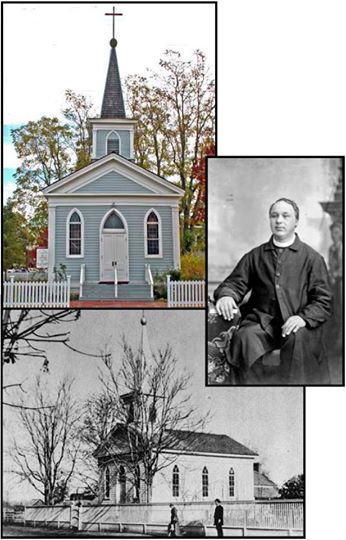
Shortly after the discovery of gold in Jacksonville in 1852, Reverend James Croke celebrated the first Catholic mass in the home of a local resident. In 1855, Croke reported to the Archbishop that he had counted 105 Catholics in the Rogue Valley alone. In 1858, James Cluggage, donation land claim owner of most of the original Jacksonville townsite, deeded the 100’ x 200’ parcel at the corner of 4th and D streets for $5 for “the use and benefit of the Catholic Church.” St. Joseph’s Catholic Church, dedicated November 1, 1858, was the first parish church built in Southern Oregon to serve the Catholic population and is the oldest Catholic Church still standing in the region. Father Francis Xavier Blanchet, shown here, was appointed parish priest in 1863 and served in that position for 25 years. In its early years, St. Joseph’s had many missions attached, some as distant as Corvallis to the north and Lakeview to the east.
St. Mary’s Academy
The cul-de-sac off E. California Street in Jacksonville now known as Beekman Square was originally the site of St. Mary’s School. Established in 1865 by three members of the Sisters of the Holy Names of Jesus and Mary, it operated as a 12-year boarding and day school for the daughters of the more well-to-do pioneer families. It graduated its first student in 1871. St. Mary’s moved to Medford in 1908 and became co-educational in the late 1920s. It’s currently serves middle and high school students.
Thomas Fletcher Royal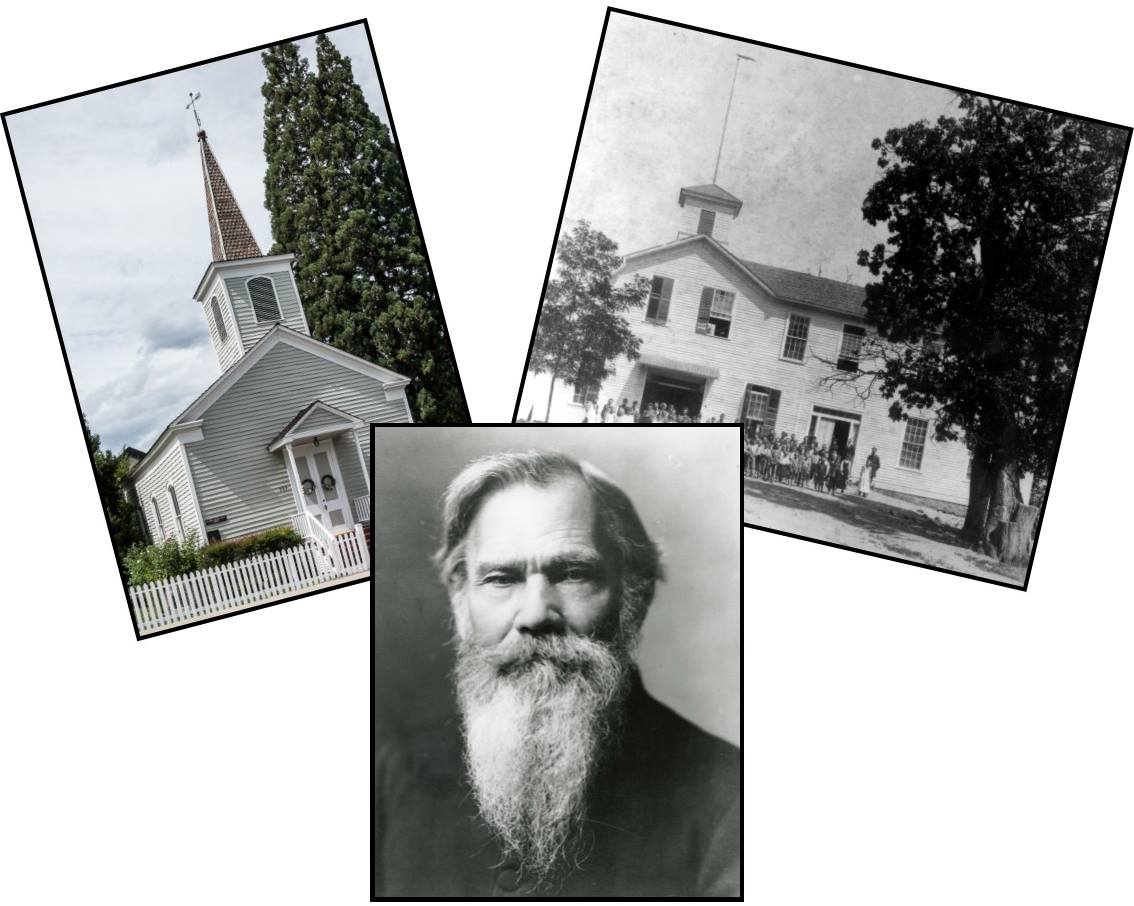
March 27, 2018
Thomas Fletcher Royal, who raised the money for and oversaw the completion of Jacksonville’s St. Andrews Methodist Episcopal Church in 1854, preached for over 50 years becoming one of the most widely known and longest serving pioneer clergyman in the Pacific Northwest. The Jacksonville circuit was his first Oregon assignment. In addition to filling multiple pulpits, he was also heavily involved in education. He played a major role in the development of Jackson County’s early school system and served as the first superintendent of Jackson County School District #1. After leaving Jacksonville in the early 1860s, he served as Principal of Douglas County’s Umpqua Academy, Principal of the Portland Academy and Female Seminary, teacher and clerk for the Siletz Indian reservation, and Superintendent of the Klamath Indian Mission and Boarding School. When he returned to pastoral duties, he served numerous churches. Even after “retiring”, he continued preaching, ministering to the convicts of the Salem Penitentiary and the inmates of the Salem Insane Asylum.
